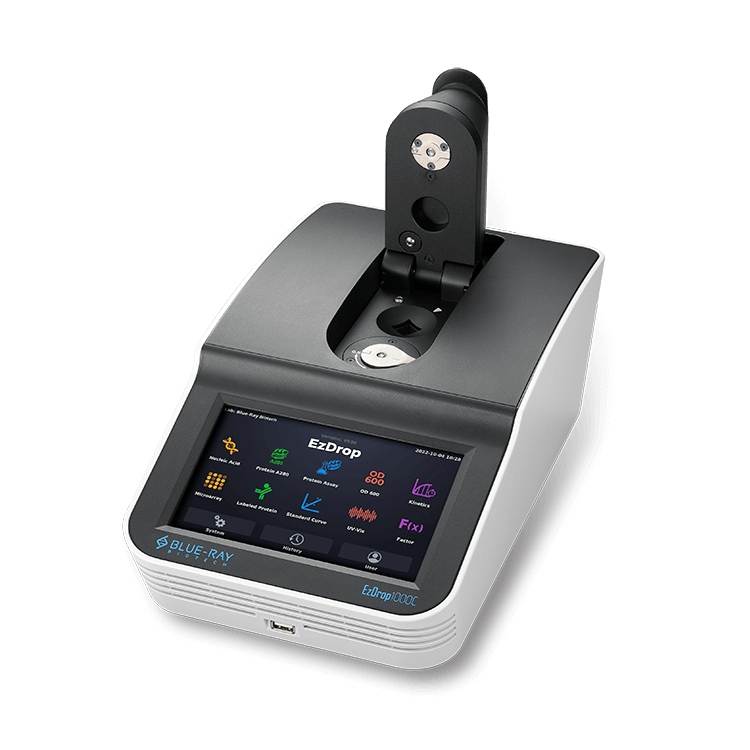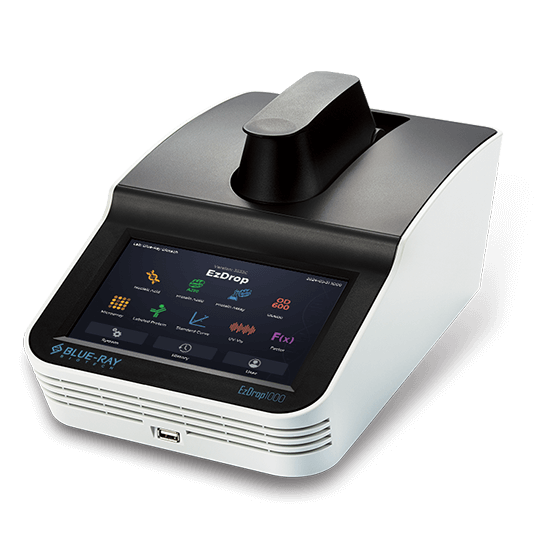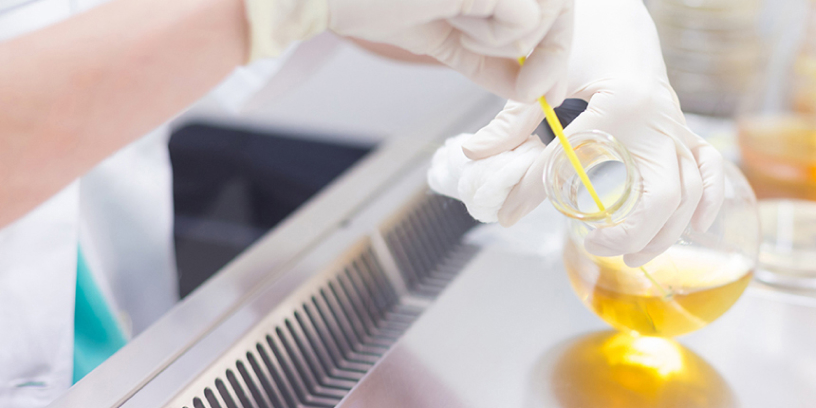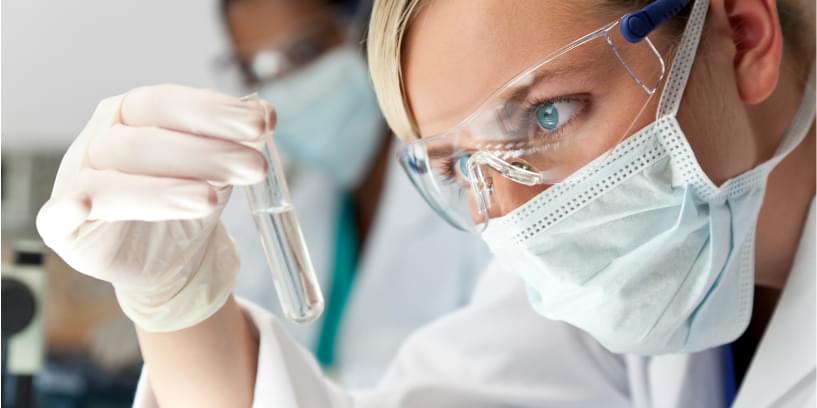Micro-Volume UV/Vis Spectrophotometer Selection Guide
2022-12-21

Micro-volume UV/Vis Spectrophotometer is an indispensable routine analytical instrument of any laboratory. This guide introduces the principles of Micro-volume UV/Vis Spectrophotometer and provides recommendations and references on application considerations, comparisons and selection of suitable product.
Table of contents
- Principles and Applications of Micro-Volume UV/Vis Spectrophotometer
- How to Select the Most Suitable Micro-Volume UV/Vis Spectrophotometer?
- Recommended Product - EzDrop Series of Micro-Volume UV/Vis Spectrophotometer
Table of contents
- Principles and Applications of Micro-Volume UV/Vis Spectrophotometer
- How to Select the Most Suitable Micro-Volume UV/Vis Spectrophotometer?
- Recommended Product - EzDrop Series of Micro-Volume UV/Vis Spectrophotometer
Principles and Applications of Micro-Volume UV/Vis Spectrophotometer
Micro-volume UV/Vis Spectrophotometer is used for the quantitative and qualitative analysis of samples at the ultraviolet and visible light spectrum (usually between 190 to 780nm). It operates by passing light through the sample solution at specific wavelengths. Since different samples have different light absorbance, we can quantify the concentration of the sample solution by measuring the absorbance and calculate with formula. The Micro-volume UV/Vis Spectrophotometer is an essential part of a laboratory, and is often used in the quantification of nucleic acids and proteins and measuring the concentration of bacterial growth.
How to Select the Most Suitable Micro-Volume UV/Vis Spectrophotometer?
It can be a daunting task to choose the most suitable micro-volume UV/Vis Spectrophotometer from a myriad of commercially available models. There are two common types of spectrophotometers: one is purely used in micro volume detection, the other has greater flexibility in detection as it can offer micro-volume and cuvette measurement.
Know your needs before choosing the right model. The most basic questions to ask include:
- Experiment needs: what is the most common application in your daily experimental usage? Will there be any new applications in the future?
- Sample type: the volume of sample solution in different applications will also differ. For example, applications like nucleic acids or protein quantification analysis will usually require small volumes of samples in the micro liter (μL) range. For applications like concentration of bacterial growth, red wine and food quality control, then greater sample volumes may be required.
The common sample types are described in the following table:
| Sample Type | Range of Minimum Sample Volume | Wavelength of Test Absorbance | Sample Measurement Mode |
|---|---|---|---|
| Nucleic acids | 1 -2 μL | 260 nm | Micro-volume |
| Proteins | 1 -2 μL | 280 nm | Micro-volume |
| Bacterial solution | 1 mL | 600 nm | Cuvette |
| Measurement of red wine quality | 1 mL | 420. 520. 620 nm | Cuvette |
| Environmental and food samples | 1 mL | Based on the needs of experiments | Cuvette |
| Chemical samples | 1 mL | Based on the needs of experiments. Can scan with the whole spectrum if unknown | Micro-volume/Cuvette |
For laboratories that only conduct quantification research on nucleic acids or proteins, a micro-volume model will satisfy most experimental needs. However, if more complex applications are possible in the future, then it may be more advantageous to choose a spectrophotometer that can process micro-volume and lMeasurement of nucleic acids and proteins (A260, A280): Comprehensive Nucleic Acid Quality Control: Total Solutions for Molecular Experiment Issues Measurement of bacterial growth (OD600): OD600 Measurement: A Key Technique in the Microbiology Laboratoryarge scale samples at the same time.
In addition, you should also consider functional needs, ease of use and maintenance requirements:
- Temperature Control and Stirring Function in Cuvette Detection:
Many organic samples are temperature-sensitive which will affect the speed of reaction and precision of results, such as the study on enzyme kinetics; when processing samples with high viscosity or easily clumped (like medicinal powders), a model with stirring functions to keep the samples stirred and dispersed may be desired.
- Convenience and cost of maintenance:
Is the instrument easy to operate? Can the instrument connect directly to a computer or operated independently? Does it have USB data storage function? Don’t forget to consider costs related to subsequent maintenance.
Recommended Product - EzDrop Series of Micro-Volume UV/Vis Spectrophotometer
To satisfy the needs of researchers on operating micro-volume UV/Vis spectrophotometer, the EzDrop series of Micro-Volume UV/Vis Spectrophotometers developed by Blue-Ray Biotech have the following advantages:
- Broad: full-spectrum (190 – 1000 nm) range of detection; dual-mode applications of micro-volume and cuvette; temperature control at 37-45 °C and sample stirring functions, easily measure and quantify nucleic acids, proteins, chemicals, foods or environmental samples.
- Fast: highly efficient sample measurement, can be completed in 3 seconds; faster than the 8 to 10 seconds sample detection speed of most other products on the market; 2-3 times increase in performance leads to greater research outputs.
- Accurate: high precision and reproducibility of measurements, making your experimental data and research more reliable.
- Simple: user-friendly interface, allows researchers to freely input absorbance values and sets formula; operate customized analysis; fixed optical path-length design and ability to manually select the optical path-length, avoiding the extra costs associated with calibration of motor-controlled optical path-length.
- 2-Year warranty and comprehensive customer service making it the best choice for researchers to perform quantification experiments.
The EzDrop series makes your research broader, faster, more precise and easier!
Related Post:




